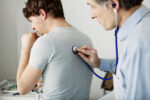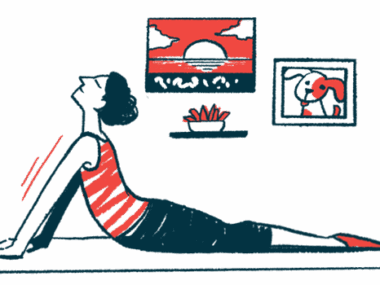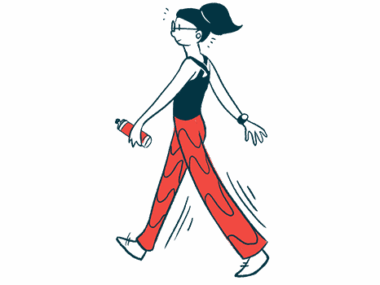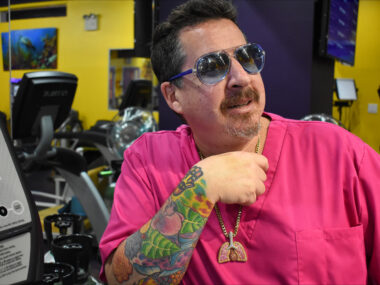Phone App Breathing Exercises Help Respiratory Muscle Strength
Written by |

Breathing exercises via a mobile app help improve respiratory muscle strength and mobility in the diaphragm in patients with severe chronic obstructive pulmonary disease (COPD), a study says.
The study, “Respiratory muscle training program supplemented by a cell-phone application in COPD patients with severe airflow limitation,” was published in the journal Respiratory Medicine by a team led by researchers in Romania.
Exercise training is a mainstay of pulmonary rehabilitation for COPD, with patients showing improvements in exercise capacity and quality of life, as well as an easing of shortness of breath (dyspnea).
Training usually includes respiratory muscle training, involving both inspiratory and expiratory muscles, and was traditionally conducted in hospital settings requiring constant monitoring.
However, “modern times have led to a paradigm shift in which hospital settings are being transferred to home care settings thus reducing healthcare resources. Furthermore, there is an increasing use of mobile phone applications and other technologies to support the change in the management of care,” the researchers wrote.
Smartphone apps, in particular, enable the continuous monitoring and collection of health information from patients, but whether this type of app would benefit COPD patients is poorly investigated.
Romanian researchers assessed the effectiveness of an online respiratory muscle training conducted at least three times a week over six months through a mobile app called Pneumocontrol. The sessions were led by a professional pulmonary rehabilitation physical therapist.
Pneumocontrol was especially developed for COPD patients by a group of pulmonology physicians together with an IT specialist. It includes rehabilitation programs recommended by the American Thoracic Society, including breathing exercises, strength training, and endurance training.
A group of 49 patients with severe but stable COPD were included in the study. These patients were unable to perform their rehabilitation training in the hospital due to restrictions imposed by the COVID-19 pandemic. During the six months, 13 patients skipped exercises and two patients had disease worsening at the training’s end, so they were excluded from the analysis.
The analysis therefore included 34 patients with a mean age of 59.29 (range 44–67).
Researchers analyzed the patients’ lung volumes, respiratory muscle strength — both maximal inspiratory (MIP) and maximal expiratory pressure (MEP) — and diaphragm amplitude, as assessed by ultrasound. The diaphragm, the main inspiratory muscle, contracts, making the lungs fill up with air. Each parameter was analyzed at the start and end of the study.
To assess MIP, each patient was asked to take the maximum inspiration and then expel the maximum air while the nose was blocked with a clip. MEP was measured after a deep and full inspiration, followed by a forced exhalation. Each test was conducted three times, and the best value was used in the final analysis.
Over a third of the patients were deemed overweight (35.3%), according to their body mass index (BMI), and 17.6% were obese; the remaining were of normal weight (also 35.3%), with 11.4% underweight.
Overall, 33 of the 34 patients saw improvements in their respiratory muscle strength after using the Pneumocontrol app, when taking into account the MEP values. Specifically, the median MEP significantly increased from 83.41 centimeters of water (cmH2O) pre-rehabilitation to 95.03 cmH2O in the post-rehabilitation stage. The median MIP also showed a significant increase, from 57.91 to 73.21 cmH2O post-rehabilitation.
Diaphragm mobility also increased, from 2.81 cm (pre-rehabilitation) to 3.44 cm (post-rehabilitation), a statistically significant difference.
In each assessment pre- and post-rehabilitation, the diaphragm mobility showed a positive significant correlation with MIP and MEP. A reduced diaphragm mobility is associated with lower inspiratory and expiratory pressure.
Overall, “respiratory muscle training supplemented through a cell phone application can improve respiratory muscle strength and diaphragmatic mobility,” the researchers concluded.
“Moreover, ultrasound assessment could be used as an additional tool for evaluation of clinical effects of pulmonary rehabilitation in patients with COPD,” they added.






